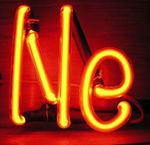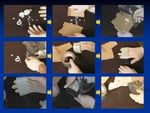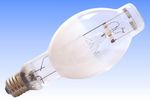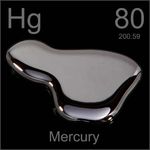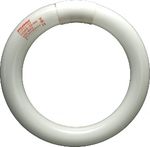FLUORESCENT AND MERCURY-CONTAINING LIGHT BULBS
←
→
Page content transcription
If your browser does not render page correctly, please read the page content below
FLUORESCENT AND MERCURY-CONTAINING LIGHT BULBS Fluorescent Light Bulbs Compact fluorescent lamps (CFLs) and fluorescent light tubes (FLs) use less energy than their incandescent counterparts, last up to ten times longer than incandescent bulbs, and reduce carbon dioxide emissions. The use of fluorescent lighting also diminishes our dependence on coal-based power plants, and since coal also contains trace amounts of mercury, the emissions of mercury by burning coal are reduced with the use of FLs. Fluorescent Lighting contains a minute amount of mercury vapor sealed within the glass tubing. On average a light tube contains approximately 5 milligrams of mercury, roughly equivalent to the tip of a ball-point pen. Mercury (Hg) is an essential, irreplaceable element in CFLs and FLs and makes them an efficient light source, making them a safe alternative to incandescent bulbs. If used properly, no mercury is released when the bulbs are in use and pose no danger as a result. However, both CFLs and FLs are made of glass tubing and can break if dropped or handled improperly. When removing the lamp from its packaging, installing it, or replacing it always screw and unscrew the lamp by its base, and never forcefully twist the bulb or tube into a light socket. Proper disposal under the EPA’s Universal Waste Rule allows mercury-containing bulbs and tubes to be treated as non-hazardous as long as they are properly recycled. As a result, used CFLs and FLs should be disposed of properly by bringing them to a facility which properly disposes of fluorescents. For small quantities in need of recycling, you may want to take advantage of your local municipal or county household hazardous waste (HHW) drop off-site for disposal. Another option available would be to seek out select commercial big box outlet stores which offer an in-store recycling service to their customers at the entrance of their facilities. If you are a small business with large quantities of bulbs for disposal a professional hazardous waste recycler should be sought out for disposal of bulk quantities. Improper disposal of these mercury-containing light bulbs can cause emissions in the environment. Of such, one of the main hazards of mercury exposure is its tendency to build up in the atmosphere. This buildup eventually falls to the earth in the form of rain and snow polluting the land and surface waters below. The accumulation also produces a negative effect on animal tissue, in a process called “bioaccumulation” which renders the accumulation in their bodies as dangerous. As of late, significant steps have been taken to reduce the amount of mercury used in these fluorescent lighting products. As a response to growing concerns, “GREEN BULBS/ ENVIRONMENTALLY FRIENDLY” are now offered at many retail outlets. These bulbs have green markings, green printed monograms, green caps, or other green indicators indicating lower levels of mercury contained inside the lighting when compared to their “NON-GREEN BULB” counterparts. With that said “GREEN” bulbs still contain mercury and proper recycling or reclaiming rather than disposal is still encouraged.
Mercury-Containing Light Bulbs
Other lighting products which contain mercury include the following:
• High-Intensity Discharge (HID) Lamps:
o Mercury vapor lamps: used in general floodlights
o Metal halide lamps: used in sports stadiums
o High-pressure sodium lamps: used in street lights
o Low-pressure sodium lamps: used in parking lots
o Xenon short-arc lamps: used in vehicle headlamps
• Fluomeric Lamps: used in high-wattage lamps with a long-burning life.
• Ultraviolet Lamps: used as specialty lamps for tanning, medical use, and food stock
disinfecting.
• Other lights: Neon lights, U-tubes, circular tubes, and any other lights which contain the
atomic symbol Hg for Mercury.Broken fluorescent bulbs can pose an immediate health threat and risks caused by exposure can be
minimized by following these proper clean-up and disposal guidelines provided by the USEPA:
BEFORE CLEANUP
• Have people and pets leave the room.
• Air out the room for 5 – 10 minutes by opening a window or door to the outdoor environment.
• Shut off the central forced air heating/air-conditioning system, if you have one.
• Collect materials needed to clean up broken bulb:
o stiff paper or cardboard;
o sticky tape;
o damp paper towels or disposable wet wipes (for hard surfaces); and
o a glass jar with a metal lid or a sealable plastic bag.
DURING CLEANUP
• DO NOT VACUUM. Vacuuming is not recommended unless broken glass remains after all other
cleanup steps have been taken. Vacuuming could spread mercury-containing powder or mercury
vapor.
• Be thorough in collecting broken glass and visible powder. Scoop up glass fragments and powder
using stiff paper or cardboard. Use sticky tape, such as duct tape, to pick up any remaining small
glass fragments and powder. Place the used tape in the glass jar or plastic bag. See the detailed
cleanup instructions for more information, and for differences in cleaning up hard surfaces versus
carpeting or rugs.
• Place cleanup materials in a sealable container.
AFTER CLEANUP
• Promptly place all bulb debris and cleanup materials, including vacuum cleaner bags, outdoors in a
trash container or protected area until materials can be disposed of. Avoid leaving any bulb
fragments or cleanup materials indoors.
• Next, check with your local government about disposal requirements in your area, because some
localities require fluorescent bulbs (broken or unbroken) be taken to a local recycling center. If there
is no such requirement in your area, you can dispose of the materials with your household trash.
• If practical, continue to air out the room where the bulb was broken and leave the heating/air
conditioning system shut off for several hours.You can also read



